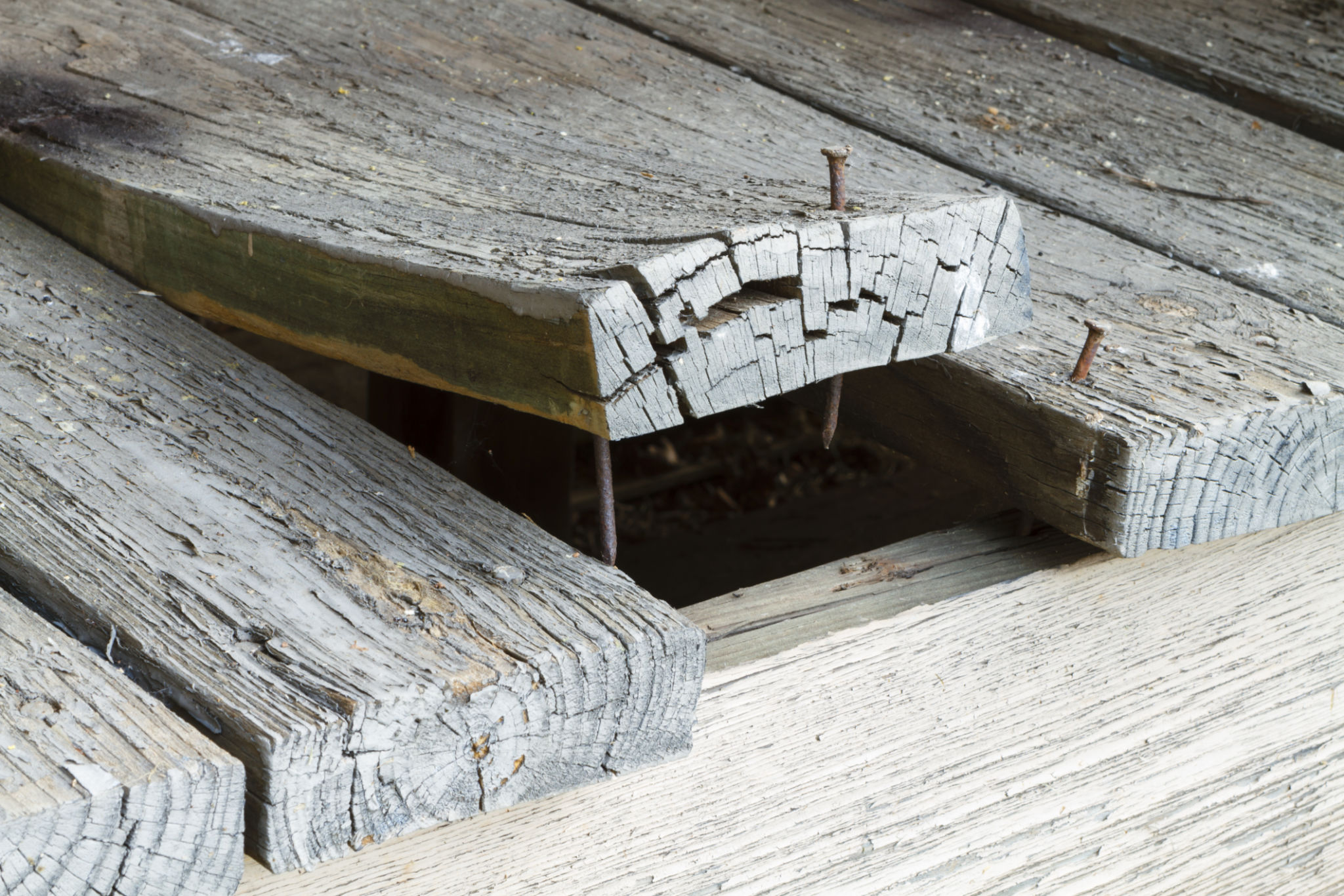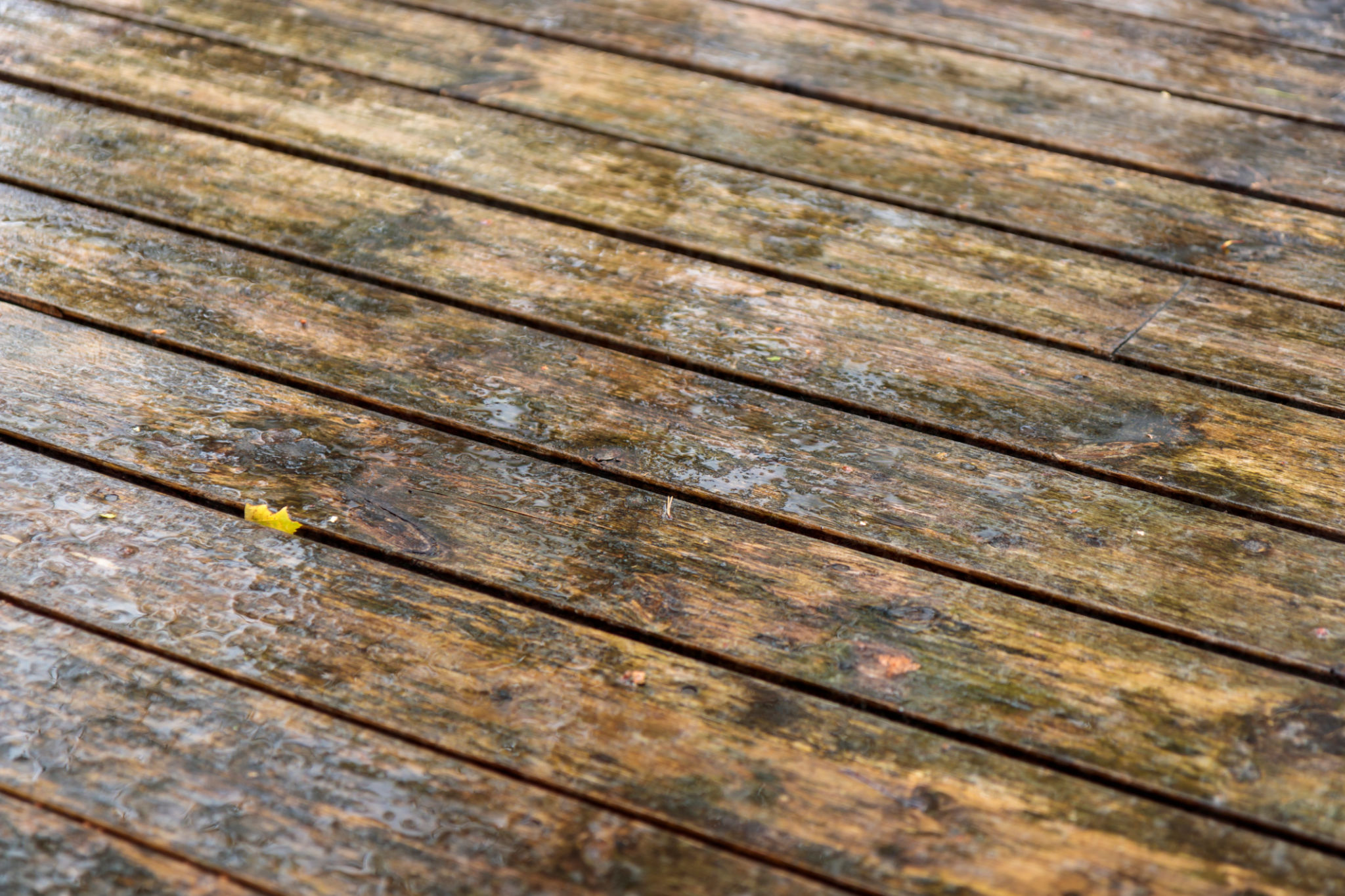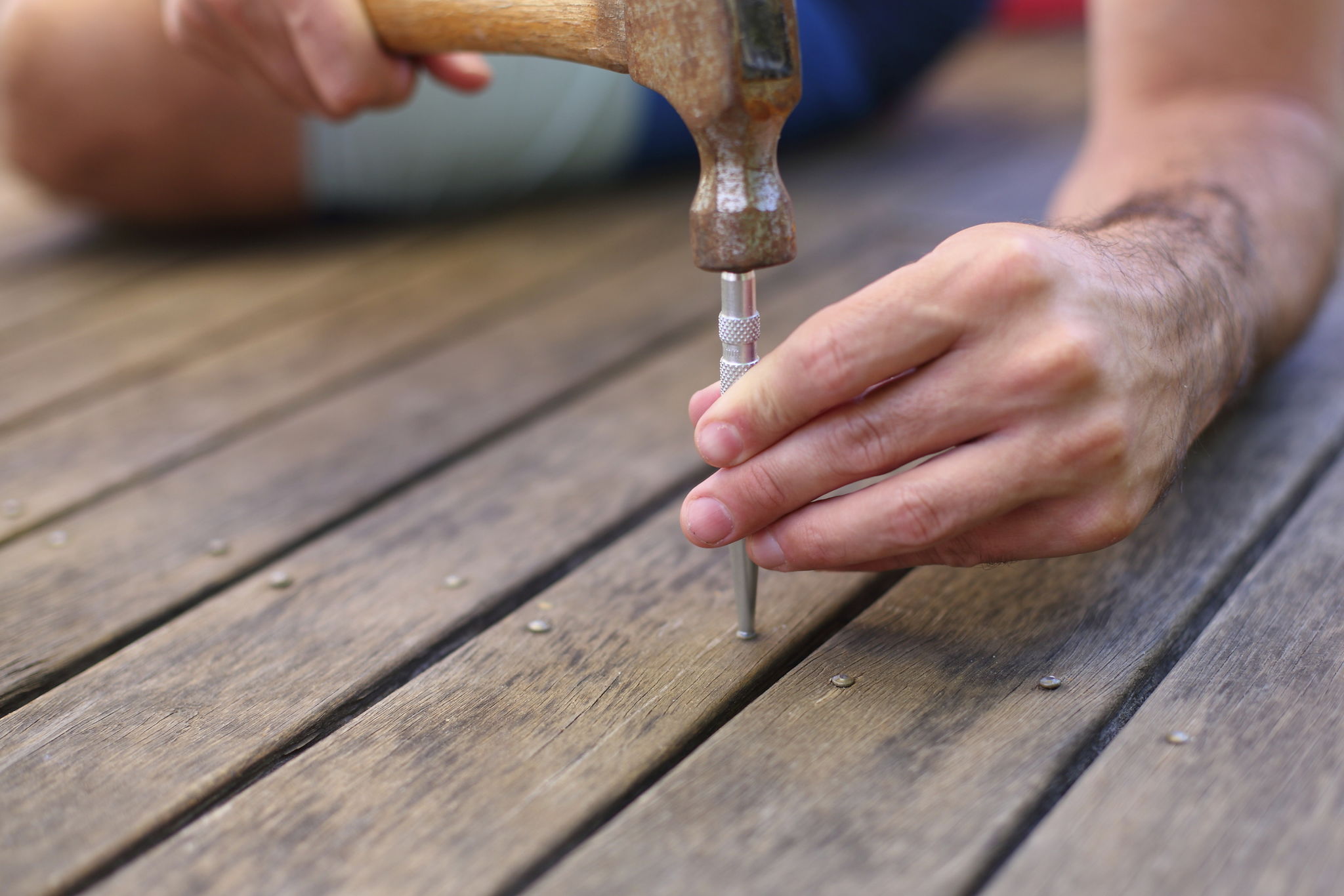Top 5 Signs Your Deck Needs Resurfacing and How to Address Them
Recognizing the Need for Deck Resurfacing
Your deck is an extension of your living space, providing a perfect spot for relaxation and entertainment. However, like any outdoor structure, it is subject to wear and tear. Identifying when your deck needs resurfacing is crucial to maintain its safety and aesthetics. Here are the top five signs that it's time to give your deck some much-needed attention.
1. Visible Damage
One of the most obvious signs that your deck needs resurfacing is visible damage, such as cracks or splinters in the wood. These can not only detract from the visual appeal but also pose potential safety hazards. Replacing damaged boards and applying a fresh surface coating can restore your deck's appearance and functionality.

2. Discoloration and Fading
Exposure to sunlight and weather elements can cause your deck to fade and lose its original color. If your deck looks washed out or has uneven coloration, it might be time for resurfacing. A new stain or sealant can rejuvenate the color and offer protection against further fading.
3. Mold, Mildew, or Algae Growth
If you notice green or black patches on your deck, it's likely mold, mildew, or algae. These growths not only make the deck slippery but also indicate moisture problems. Cleaning the deck thoroughly and applying an anti-microbial treatment during resurfacing can prevent future growth.

Addressing Deck Resurfacing Needs
4. Loose or Rusty Fasteners
Inspect your deck for loose nails, screws, or fasteners. These can compromise the structure's integrity and lead to bigger issues if not addressed promptly. Resurfacing provides an opportunity to replace old fasteners with new, rust-resistant ones, ensuring your deck remains secure.
5. Soft Spots or Sagging Areas
Walking on your deck should feel solid and even. If you notice any soft spots or sagging areas, it could be a sign of rot or structural weakness. Addressing these issues during resurfacing is crucial to prevent further deterioration and ensure safety.

Steps to Resurface Your Deck
Once you've identified the signs that your deck needs resurfacing, it's essential to take action. Here's a step-by-step approach to effectively resurface your deck:
- Inspect and Repair: Start by inspecting your deck for any structural damage and repair or replace damaged boards.
- Clean Thoroughly: Use a pressure washer or specialized deck cleaner to remove dirt, mold, and old finishes.
- Sand the Surface: Sanding helps smooth out rough patches and prepares the wood for new stain or sealant application.
- Apply Stain or Sealant: Choose a high-quality stain or sealant that provides UV protection and moisture resistance.
- Regular Maintenance: To prolong the life of your resurfaced deck, perform regular maintenance checks and cleaning.
By staying vigilant and addressing these signs promptly, you can extend the life of your deck and ensure it remains a safe and inviting space for years to come.